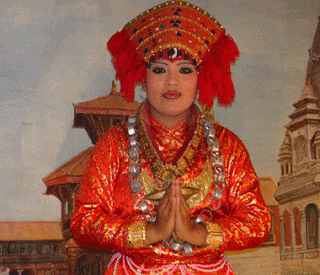Kathmandu
Kathmandu, the capital and the largest city of Nepal, derives its name from Kasthmandap or "house of wood" a pagoda-style temple. A few steps away is the Temple of the Living Goddess, where the clients may catch a glimpse of the Kumari at one of the open windows overlooking the inner courtyard
Patan
Patan is also known as Lalitpur or the "city of fine arts" and is the oldest city in the valley. This Buddhist City is said to have been founded by Emperor Ashoka in the 3rd century BC. Patan is the cradle of arts and architecture of the valley, a great center both of the Newari Buddhist religion and of traditional arts & crafts with 136 bahals or courtyards and 55 major temples.
Bhaktapur
Bhaktapur or Bhadgaon meaning the "city of devotees" lies 14 km east of Kathmandu. It is the home of medieval art & architecture and still retains its rich medieval aroma. A city of farmers, Bhaktapur is also known for it's pottery and weaving.
Boudhanath
The stupa of Bodhanath lies 8 km east of Kathmandu. It is the biggest Stupa in Nepal and is located on flat land and encircled by houses & monasteries, where Rinpoches reside. This colossal Stupa is set on concentric ascending terraces in the powerful pattern of a Mandala.
Bungmati & Khokana
The twin villages of Bungmati & Khokana date from the 16th century and are located south of Kathmandu, down a rutty road dotted with Chaityas. Bungmati is the winter home of lord Rato Machhendranath, the protector God of Patan.
Budhanilkantha
9 km north of Kathmandu in a small pond at the foot of the Shivapuri Hills lies the half-submerged massive black stone statue of the reclining Vishnu resting on a bed of snakes. Worshippers strew the sleeping Vishnu with offerings of flowers & rice. It is a monumental sculpture from the Lichhavi period
Champa Devi
The hike to the top of Champa Devi (2,278m), the highest peak on the Chandragiri Ridge south west of Kirtipur, affords a panoramic view of the west Kathmandu valley, back dropped by the snow covered Himalayas. Either starting from Chovar or from Pharping the trail climbs steeply to join at a saddle close to the top
Chandeshwari
Chandeshwari shrine is located north of the sprawling trading town of Banepa near Dhulikhel. A track leads northeast past the town hospital to the temple on the bank of a forested gorge. The temple is dedicated to Parvati, whom they called upon to slay ?Chand?, the most fearsome of the demons.
The main attraction is a remarkable fresco of Bhairav, painted on the western wall of the main structure. The torana and struts of the three-tiered temple are richly carved with the eight Astha Marikas, or "Mother goddesses" and eight Bhairavs.
Changunarayan
The road access to Changunarayan, 18 kms east of Kathmandu is from behind Bhaktapur. Alternatively, it is a 45 minutes walk up from the Sankhu road, across the Manohara River, using the old pilgrim?s route or a pleasant half-day hike along the ridge from Nagarkote on the eastern valley rim.
Chapagaon
A rough track to the south of the Kathmandu Valley winds steeply downhill, through intricately terraced fields of reddish brown soil to the ancient Lichhavi village of Lele, on through terraced mustard fields and bamboo groves to Chapagaon.
Chovar
Carved out of a hillside, the Chovar gorge is the only outlet for all the waters of the valley. Legend has it that Manjushree, an ancient saint cut the mountain with his magical sword, to drain out the water from the Kathmandu Valley which was then just a lake
Dakshinkali
Dakshinkali is 45-minute drive south from Kathmandu. Located in a dark valley at the confluence of two streams, the shrine of Dakshinkali is the most spectacular of all Kali temples. Animal sacrifices are offered to this deity signifying fertility and the procreative powers of the Female, every Tuesday & Saturday. The animals are presented to the priest who will ritually decapitate them with a khukuri knife & bathe the black stone image of Kali in blood.
Dhulikhel
30 kms east of Kathmandu lies the small resort town of Dhulikhel set on a hill top, enveloped in copper soiled terraces with magnificent views of the central Himalayan peaks. Dhulikhel is well known for its sunrise views and a number of day trails lead along the north ridge of the town. A good way to get a glimpse of Nepalese village life.
Godavari
18 kms south of Kathmandu lies the Royal Botanical Gardens at Godavari. With its rushing streams and shady meadows it is a popular picnic spot. It also has a notable collection of orchids, cactii & ferns. A quiet path leads to the Godavari Kunda, a spring where the sacred water of the Godavari river pours from the mountains.
















No comments:
Post a Comment